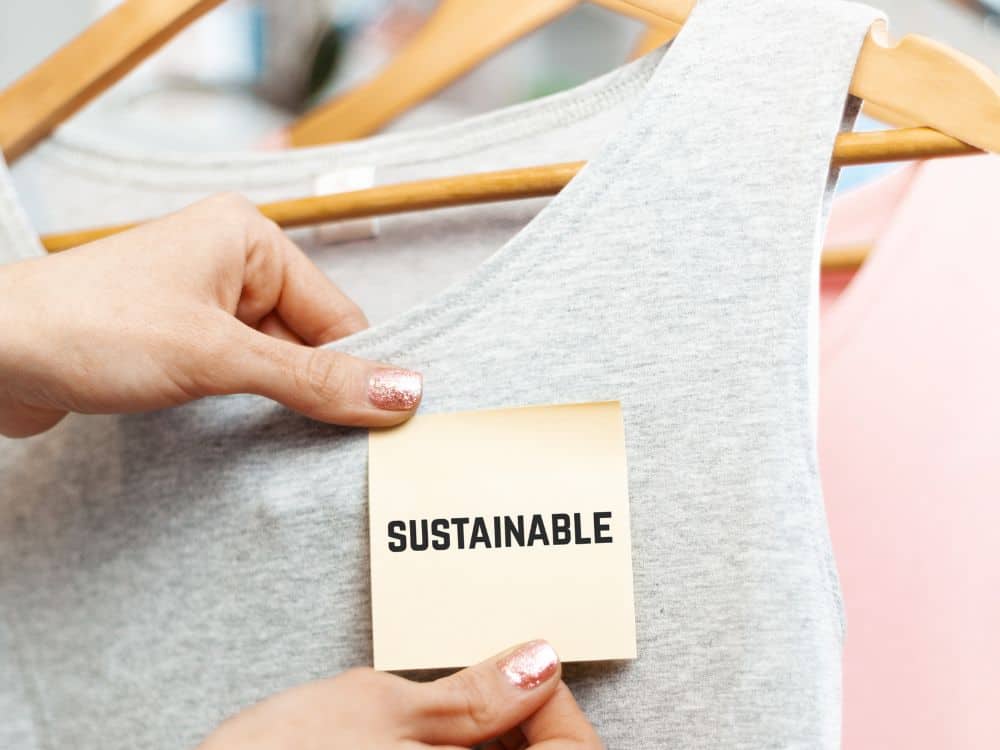
What Is Sustainable Fashion? A Comprehensive Guide For The Ethical Consumer
You’ve probably heard the term buzzing around sustainability circles and responsible runways, but what is sustainable fashion?
As it turns out, it’s a bit more complicated than simply staying on trend with the latest silhouettes and color palettes—especially given the environmental destruction, human rights abuses, and rampant greenwashing that make it difficult to discern truly sustainable and ethical fashion.
In a neutral-colored nutshell, our sustainable fashion definition is this:
An ethical approach towards designing, sourcing, manufacturing, selling, and delivering clothing in a way that minimizes the industry’s negative impact on people and the planet along the entire value chain.
But what is sustainable and ethical fashion from a practical perspective? How can we become more conscious clothing consumers?
Here, we’ll teach you how to apply this definition when shopping for clothes: from examining raw materials to practices implemented down the supply chain to a garment’s end-of-life prospects.
Call it a “fashion framework”, one we rigorously apply to all our ethical and sustainable fashion guides.
Use the links below to navigate around the article, especially if referring back to it (as we hope you will) in your future searches for ethical fashion brands. Or watch our video below for the highlights.
The Breakdown on What Sustainable Fashion Is (& Isn’t)
- Fashion today: Why is sustainability important in fashion?
- What is sustainable and ethical fashion?
- Buyer’s guide: What is a sustainable clothing brand and how to find one?
- Examples of sustainable fashion brands
- How to be a more conscious fashion consumer
- How to build a more sustainable fashion industry
- Key resources for ethical sustainable fashion
1. Fashion Today: Why Is Sustainability Important In Fashion?
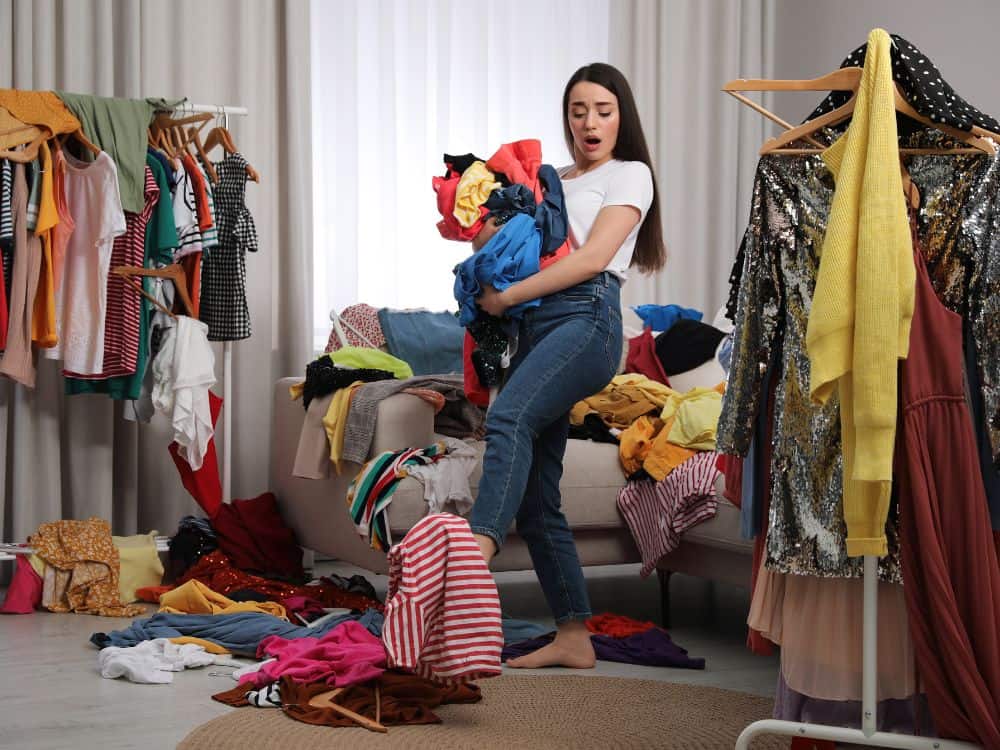
What is sustainable fashion and why is it important?
We live in a world where artisan coffee costs more than a t-shirt.
It’s called fast fashion and, newsflash, it’s disastrous.
Fast fashion brands—with headliners like H&M, Forever 21, Primark, Zara, and Target—have turned four seasons into 52, one for almost every week of the year. Designs go “out” of style as fast as they arrive.
They’re so cheaply made, it’s no surprise to find a hole after a single wear. But no sweat(shop); if it wears out, it’s mere pocket change to replace.
While reducing consumption is one solution, conservative shopping habits alone aren’t enough to eliminate the fashion industry’s unglamorous dark side beneath all the satin and sequins.
Here are eight issues that illustrate why we need sustainability in the fashion industry.
Issue #1: Human Rights Violations
Some of the many violations within the global fashion system, which employs more than 300 million people, include:
- unlivable wages
- child labor
- modern slavery
- migrant exploitation
- gender discrimination (most garment workers are young women)
- verbal, sexual, and physical abuse
- forced overtime (garment workers in Bangladesh work 60 hours per week, earning ⅓ the wages of other Asian garment factories)
- hazardous work conditions
As Lucy Siegle says, “Fast fashion isn’t free. Someone, somewhere, is paying.”
It wasn’t until 2013 when the Rana Plaza Bangladesh garment factory collapsed, killing 1,135 people and injuring 2,500 more, that people started paying attention and asking why cheap fashion was so cheap.
This event sparked the Fashion Revolution.
For greater insight, check out The True Cost documentary and Garment Worker Diaries podcast that records and presents interactive reports on working conditions in Bangladesh, Cambodia, and India.
These human rights violations happen across the entire supply chain:
- Raw material sourcing: Unfair labor practices for farmers and processors and exposure to numerous chemical pesticides and plasticizers, which negatively affect human health. For example, 61% of Pakistani cotton pickers experience skin irritations, coughs, headaches, and more. That’s just one example of the injustices within the cotton industry.
- Garment manufacturing: Unsafe working conditions in countries with no union or workers rights. This is particularly relevant in Asia and China, where ~65% of all clothing is made.
- Post-production (sales, wear, use): Fashion isn’t known for being very diverse or inclusive. While not akin to slave labor, fashion’s focus on rail-thin, white models is a major problem, creating global body image issues and marginalizing minority groups.
Issue #2: Complex Supply Chains & Lack Of Transparency
Any business that makes anything inevitably contributes to modern slavery to some degree, because full visibility across the entire supply chain is so difficult.
Producing a single garment is complex, with many exchanges along the way. A typical seed-to-shelf supply chain includes:
- Sourcing materials and natural resources for every fabric involved (this includes farming techniques, soil, seeds)
- Raw material creation (i.e. spinning into fiber)
- Turning fiber into fabric
- Fabric dying and prepping
- Design
- Garment production (including components like thread, buttons, and zippers)
- Finishing touches (adding tags, pre-shrinking, etc.)
- Shipping to sellers across the world
- Shipping to buyers across the world
Tons of different hands and production bodies are involved. Plus, it typically changes for every season and garment, so brands aren’t always dealing with the same suppliers.
Even well-intentioned sustainable brands are likely complicit along their supply chain because it’s almost impossible to gain complete traceability of every step.
Issue #3: The Rate Of Fashion Consumption
The scale and unrelenting growth within the fashion industry is huge. Capitalism keeps the engine moving.
The world consumes 80 billion pieces of clothing each year (up 400% from two decades ago).
North America is the largest textile consumer in the world—with each person buying 80 pounds annually—and globally, people are striving toward the consumption levels of these developed countries.
Shoppers today purchase 60% more clothing, which lasts half as long as it did 15 years ago. This unchecked growth business model operates with no regard to the social and environmental implications.
The fast fashion alternative is slow fashion, a subset of the sustainable fashion movement, meaning a slower mentality of both consumption and product.
On the brand side, this promotes things like timeless designs and minimally changing collections. On the consumer side, it might mean developing a minimalist wardrobe or choosing clothes repair services before defaulting to replacing.
Issue #4: Chemical Use In Fashion Production
Nevermind coal mining, air travel, or carbon-spewing oil refineries: fashion is one of the most environmentally damaging industries.
Approximately half of all textiles are made from cotton. One of the “dirtiest”, most chemical-intensive crops, it uses 25% and 18% of the world’s insecticides and pesticides, respectively. The average cotton t-shirt is grown with 17 teaspoons of chemicals.
Raw material growth aside, harmful chemicals are also present in dyeing and processing of textiles.
Not only are these dangerous to growers and manufacturers, but to wearers. Surely style can’t be worth the price of wearing frightfully common formaldehyde…
Instead, a sustainable fashion approach is to prioritize organically-grown fabrics and less toxic chemicals in processes, such as azo-free or natural dyes.
Things like bluesign® and OEKO-TEX certification tell consumers there was post-production chemical testing of their sustainable clothing, meaning no toxic residue.
Issue #5: Water Waste & Water Pollution
Those chemicals don’t just disappear after production; they pollute our waters.
Bangladesh’s leather tanneries dump 22,000 cubic liters of toxic waste into the Buriganga River, the city’s main water supply.
Us wearers further pollute waterways with microplastics every time we wash synthetic fabrics. These travel to the ocean, where they get eaten by marine life, which in turn gets eaten by us—leading to microplastics turning up in human blood.
One way you can prevent this is by using the Guppy Friend microfiber catching laundry bag. Washing less frequently using a gentle cycle and cold water also helps.
Speaking of water, the fashion industry is its second-largest consumer, utilizing 6–9 trillion liters per year.
Again, we point the finger at the thirsty crop of conventional cotton, which has led to a 15% shrinkage of the Aral Sea in Central Asia.
Once all’s said and dyed, one pair of jeans requires almost 2000 gallons of water.
To counter this, sustainable fashion approaches water usage as a resource to be reused rather than discarded. For instance, some semisynthetic fabric plasticizing and dyeing processes can be done in a “closed-loop” system recycling solvents and water.
Issue #6: Textile Waste
Fast fashion doesn’t encourage a zero waste circular economy.
From production scraps to excess “deadstock” garments, the fast fashion industry yields tremendous textile waste (most of which gets burned) before finished garments ever reach equally-guilty consumer hands.
Americans only recycle or donate 15% of unwanted clothing, sending 21 billion tons of textile waste to landfills annually. Considering 64% contain plastic, they’ll never fully biodegrade.
Of the small percentage donated, less than 20% is resold, while the rest gets shipped overseas to for-profit textile recycling companies.
For this reason, you’ll see many sustainable fashion brands embracing a circular economy by providing options to resell or recycle old clothes from either them or any brand.
Issue #7: Climate Change
All this contributes to the fashion industry accounting for 10% of the world’s total carbon footprint.
To complete the anti-cotton trifecta, global cotton production alone annually produces 220 tons of CO2.
First, tons of fossil fuels get used in production, seen in petroleum-based fabrics, coal-powered manufacturing, and gasoline-powered distribution which transports the majority of clothes around the world.
Second, clothing has one of the poorest recycling rates, and all that clothing thrown away rather than recycled, reused, or composted also contributes to GHG emissions.
Even natural materials like organic cotton are no more sustainable than synthetics if they end up in a landfill. There they’ll biodegrade anaerobically and release methane gas, a GHG is 25x more potent than CO2 and a leading cause of climate change.
In sustainable fashion, you’ll see things like synthetics made of recycled plastics, renewable energy-powered factories, and carbon offsetting to account for shipping.
Issue #8: Greenwashing
In fashion, companies often market they’re doing something special to be “sustainable”, when really they’re barely adhering to basic human rights or environmental laws.
For example, in 2019, H&M launched a “green” line called “Conscious.”
The fast fashion giant said it used “organic” cotton and recycled polyester. Environmental watchdogs called BS for it being a mere marketing tactic to make themselves seem environmentally conscious without real action.
Sustainable brands often utilize third-party certifications and auditing schemes to provide assurances against these hollow claims.
However, it’s important to bear in mind these are no 100% guarantee either. Even gold-standard schemes (like B Corp) have seen their fair share of greenwashing accusations.
2. What Is Sustainable & Ethical Fashion?

What is sustainable fashion? What is ethical fashion? Are they the same thing?
On the whole, sustainable and ethical fashion approaches towards sourcing, manufacturing and designing clothes that minimize negative human and environmental impact.
“Minimize” is the key word here, because it’s important to remember nothing is ever 100% sustainable or ethical. Trade-offs inevitably must be made, and both ethical and sustainable fashion have constantly shifting goalposts, based on new understandings of how fashion is produced and consumed.
Because they overlap in ideology, the two are pretty interchangeable. Like yin and yang or jeans and a t-shirt, you can’t really have one without the other.
However, they each have slightly different but equally important concerns.
Sustainable fashion practices predominantly apply to the environment:
- How the textiles are made (i.e. organic farming)
- What materials are used (i.e. natural materials vs synthetic ones)
- What standards are applied (i.e. fair trade or GOTS-certified, which affects the sustainability of both the environment and communities involved in production)
- Whether the materials are recycled or virgin
- How the textiles are packaged (i.e. recycled or compostable packaging)
- Whether they make use of any energy and resource-saving initiatives
- How wastewater and pollutants are managed and treated
- Attempts to offset environmental damage incurred (i.e. insetting)
Ethical fashion practices deal with social justice in the fast fashion industry, namely human rights, animal rights, inclusivity, and supply chain transparency:
- #WhoMadeMyClothes and where?
- If workers were paid fairly (i.e. living wages rather than minimum wages)
- Safe and respectful working conditions (i.e. no abuse, proper safety measures in place)
- Voluntary labor by legally working adults (i.e. no child or slave labor)
- Transparency of all entities involved (suppliers and manufacturers alike) and how they’re held accountable for their practices
- Animal welfare policies if animal byproducts are used
- Inclusive and diverse sizing and imagery
- How a fashion company gives back to benefit others, in addition to doing them no harm (i.e. charitable initiatives, support of local or marginalized communities)
Different Ways To Define What Sustainability Means In Fashion
Sustainable and ethical fashion takes the form of different “genres” and may mean different things to different people:
- Zero waste or circular fashion: Gets rid of the linear “take-make-waste” model and instead closes the loop on production by providing a built-in responsible end-of-life outcome (i.e. compostable or recyclable into new garments through the zero waste clothing brands themselves).
- Vintage or secondhand fashion: The ultimate in zero waste fashion, referring to anything previously owned and used, such as from an online thrift store. It means waste diversion AND no new manufacturing.
- Upcycled fashion: Upcycled clothing transforms pre-consumer (i.e. manufacturing scraps and deadstock) or post-consumer textile waste into garments of higher value and design.
- Recycled fashion: Garments are created from recycled yarns or other non-fashion post-consumer textile waste (i.e. rPET made from recycled plastic bottles).
- Fair trade fashion: An approach for designing, sourcing, and manufacturing clothes seeking to maximize industry benefits to workers and society at large.
- Vegan & cruelty-free fashion: Vegan fashion means no animal or animal-derived substance was used in the making of a garment. Cruelty-free fashion refers to animal byproducts sourced without harming the animal (i.e. non-mulesed ethical wool or recycled leather).
- Slow fashion: Slow fashion is the antithesis to fast fashion, and means items are created with the intent of a long life cycle and the highest quality possible.
- Regenerative fashion: Raw materials sourced via regenerative agriculture (AKA biodynamic farming) use methods that work in collaboration with nature to not only minimize farming impact, but improve soil health and sequester carbon.
3. Buyer’s Guide: What Is A Sustainable Clothing Brand & How To Find One
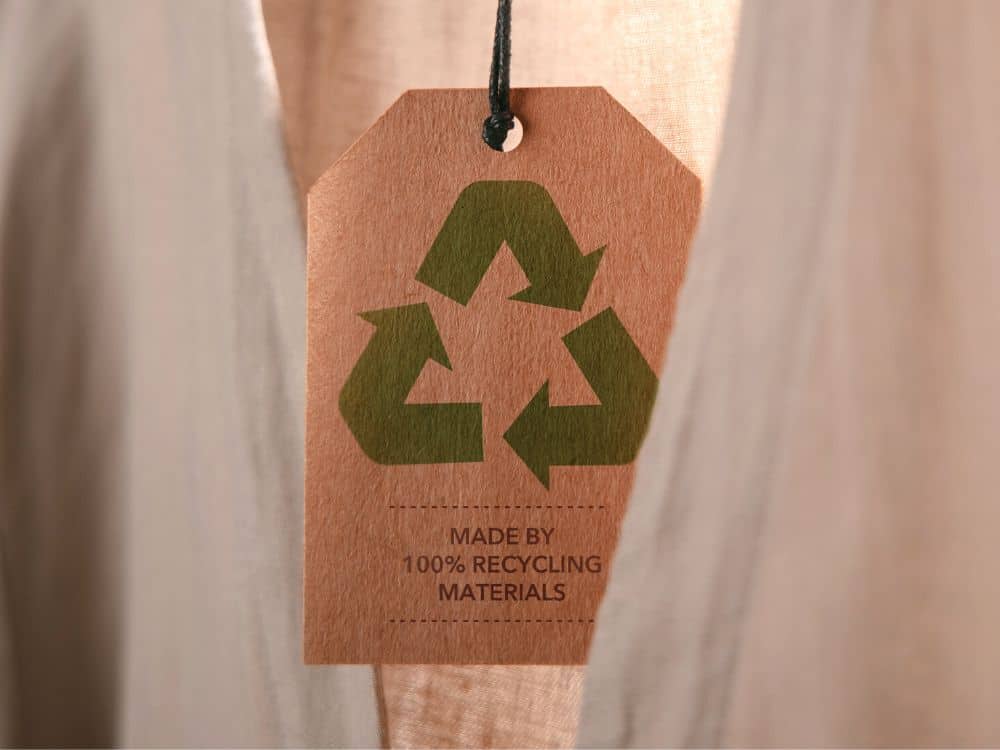
The fashion police don’t police fashion where it matters, so it’s up to consumers to know what constitutes a truly sustainable fashion brand.
Of course, with expansive supply chains and the subjectivity of ethics, there are no easy answers and sometimes, tradeoffs need to be made.
For example, synthetic fiber fill for your ethical coats may be better from an animal ethics standpoint, but animal-based down or wool insulation that’s compostable is better from a sustainability one. In these instances, we as consumers must weigh out personal values and balance the scales as best we can.
At SJ, we have six main criteria for what makes a fashion brand sustainable:
- Sustainable materials
- Supply chain and labor practices
- Carbon reduction and commitments
- Green business practices
- Inclusivity and diversity
- Community and charitable giving
1. Sustainable Materials
Materials determine the majority of a garment’s impact, so it’s no wonder sustainable fabrics are our first and most important consideration.
There’s a lot to discuss here, so here’s a quick summary of what to look for in eco-friendly fashion materials:
- Natural, organic materials in pure blends, rendering finished garments compostable
- Synthetics (if used at all) that are recycled and recyclable
- Fit for purpose (i.e. durable)
- Safe and non-toxic dyes
- Certifications to back up organic, recycled, or non-toxic claims
Sustainable fabrics typically fall into one of three categories: natural, semi-synthetic, and recycled synthetic.
Natural Fibers
These are natural fibers with minimal processing, like cotton—though we don’t include traditionally grown cotton for obvious reasons already mentioned.
- Organic Cotton: Grown and processed without any pesticides and synthetic fertilizers, requiring up to 91% less water and 62% less energy than traditional cotton.
- Recycled Cotton: Repurposed cotton from post-industrial or post-consumer waste. While it makes use of other landfill-bound material, there’s no way to organically certify recycled cotton because we just don’t know.
- Hemp fabric: One of the oldest fibers, requiring 50%+ less water than even organic cotton and no pesticides.
- Linen: Like hemp, but derived from the flax plant.
- Bamboo fabric: Bamboo is one of the most sustainable natural resources on earth, but its fabric form can go one of two ways. Raw bamboo linen is made mechanically, which is not to be confused with chemically-processed bamboo rayon.
- Protein fibers: These are all animal-based fibers and are thus not for vegan fashion, like ethical wool, down, silk, angora, alpaca, llama, cashmere, mohair, camel, and down. While earth-safe and minimally processed, it’s important to source these either recycled or from certified humane sources (i.e. ZQ Merino, Responsible Wool Standard, and Responsible Down Standard).
Cellulose or Semi-Synthetic Fibers
These are based with natural fibers (usually wood pulp) converted into a fabric via a chemical “plasticizing” method.
Synthetic fabrics are tricky, because depending on this processing is done, they’re either pretty sustainable or far from it.
For example, traditional viscose fabric uses caustic chemicals (like sulfuric acid) to turn wood into something you’d want to wear—or not, knowing that.
However, some forms of viscose (like lyocell) utilize less toxic solvents and apply them in a closed-loop system that recycles these solvents and water.
It’s for this reason (and subsequent greenwashing) that bamboo is so bamboo-zling. Chemically-processed bamboo can either be made like traditional viscose or like lyocell.
Here are the semi-synthetics you can consider part of your sustainable wardrobe:
- TENCEL™ lyocell fabric: Wood pulp (namely eucalyptus, but others, too) from sustainable sources converted into a fiber via non-toxic cellulose solvents (like amine-oxide) rather than sulfuric acid. All water and 99% of the chemicals can be recovered and reused.
- TENCEL™ modal fabric: Beech tree pulp turned into fabric using a similar closed-loop manufacturing process to lyocell.
- Bamboo lyocell: Made using a chemical manufacturing process but in a closed-loop system where the chemicals are re-used over and over again. Before buying bamboo lyocell products, check with the brand to understand their sustainability metrics.
- Select vegan leather: Some vegan leathers are actually just types of plastic (PU and PVC), but some transform plant-based materials into a leather-like substitute. Examples include Piñatex (pineapple leaf byproduct), Bananatex® (banana industry byproduct), and apple leather (apple juice industry waste). Just be sure the brand doesn’t add a plastic coating.
Recycled Synthetic Fabrics
There are many innovations going on in the Waste-to-Wardrobe world, including recycled fabrics for all major petroleum based fabrics: polyester, nylon, spandex, acrylic, polyethylene, and polypropylene.
Since they’re still plastic, recycled synthetic fabrics may not have a great end of life outcome as biodegradable fabrics, but they’re better than virgin counterparts.
Using existing plastic that otherwise pollutes our waterways is a win.
Some notable recycled synthetic fibers are:
- Recycled PET (rPET): Usually made from other textiles or recycled plastic bottles and often used in sustainable activewear.
- ECONYL: Made from recovered ocean plastics such as ghost nets, or abandoned fishing nets which make up a tenth of all ocean plastic. You’ll usually find it in sustainable swimwear.
- Spanflex: The only GRS and bluesign® certified recycled spandex alternative, but it’s still very rare to find it in use for unknown reasons.
Certifications For Material Sustainability In Fashion
We want to be sure the fabrics are what they claim to be in our sustainable clothing, meaning we look for third-party sustainability certifications.
While there are many to speak of, here are the most frequently seen in fashion:
- Global Organic Textile Standard (GOTS): Upholds ethical and ecological criteria for fibers, which must be produced 100% biologically from seed to shelf. No chemicals, pesticides, fertilizers, or machine harvesting is allowed at any stage.
- OEKO-TEX: Ensures fabrics & processes do not contain any toxic chemicals like heavy metals, colorants, preservatives, and formaldehyde. This cert can apply to either raw or finished materials, but not necessarily both, which leaves some room for greenwashing.
- USDA Organic: Says something was made with USDA-certified organic crops, but says nothing of the processing beyond that.
- Forest Stewardship Council (FSC): Despite scandals in sustainable forestry certifications, it’s meant to ensure plants are harvested using sustainable methods from well-managed forest to minimize deforestation and endangerment of animals and ecosystems.
- bluesign®: Focuses on healthy, eco-friendly production methods by accounting for water conservation, dye toxicity, and chemical exposure both for workers and customers.
- Better Cotton Standard (BCI): While imperfect, it’s the largest cotton sustainability program in the world, awarding certification based on seven social and economic sustainability principles.
- Global Recycle Standard (GRS): Establishes a minimum recycled content (50%) for consumer products so you know a brand claiming to use recycled materials is more than just 2%.
Almost all of these certification schemes have, at some point, been embroiled in greenwashing accusations.
For example, GOTS recently came under fire for large amounts of fraudulent organic cotton coming from India as a result of their third-party inspection agencies (like Ecocert) certifying farms that weren’t using organic practices at all.
Does this mean we should take any stock in certifications?
Not necessarily. Certifications are still very useful tools to determine what makes a fashion brand sustainable. It just means they’re not all that does, and they should be regarded (as with any sustainability claim) with a healthy degree of scrutiny.
Eco Friendly Fabric Dyes
Even if you have a totally organic cotton t-shirt, if it was dyed with toxic dyes and excessive water use, it’s not so sustainable.
Additionally, companies may claim their fabrics are biodegradable, even if dyed with toxic chemicals that would contaminate wherever it degrades into.
Luckily, sustainable dyes are improving, as are the processes by which we apply them.
At the very least, dyes should be azo-free. While not all harmful, some azo dyes can form aromatic amines filled with carcinogenic compounds.
Better still are plant-based dyes or other natural options like those by Colorifix, which are non-polluting, non-toxic, and use 10x less water.
For the dyeing process, look out for closed-loop and/or waterless methods such as AirDye® or CO2 dyeing.
2. Supply Chain & Labor Practices
We also have to ensure the social side is ethical across the entire supply chain, looking for:
Small, Controlled Supply Chains
Smaller supply chains mean more control and fewer unknown variables for companies. Some good indications a company has a handle on their supply chain:
- Products are made in their base country (i.e. made-in-the-USA)
- Products are made in developed countries, where workplace health and safety codes and wage requirements are more strictly enforced.
- Small product line: The larger the offerings, the larger the supply chain. Solid brands don’t need to offer a huge array of garments, just a few simple things made really well will do.
- Use of small, family-owned factories or artist cooperatives
- Regular audits and brand visits to their factories
Transparency
Larger brands with huge product lines likely can’t keep everything traceable, so we need them to be as open as possible about sourcing and manufacturing.
We want to know exactly where things were made, what protections are in place, and what workers are paid (more ethical brands joining the Lowest Wage Challenge, please!).
Transparency leads to accountability, which leads to CHANGE.
This is the thinking behind the Fashion Revolution Transparency Index, a yearly assessment of 250 major fashion brands on supply chain transparency.
In the 2022 Transparency Index, the average transparency was a dismal 24%, (up just 1% from 2021) and no brand scored above 78%.
Labor Practices
Once a company has disclosed some of their sourcing and business practices, we can consider if they’re really ethical. Greenwashing of ethics is important to look out for, as many companies are guilty of gimmicks today.
One baseline ethical standard is the Social Accountability Standard International (SA8000), though “fair treatment” of laborers is loosely defined and only encompasses big issues like no child labor and minimum wage pay (which isn’t worth any gold stars in developing countries.)
Unfortunately, companies (and Big Oil, who literally fuel the fast fashion industry) are often so good at greenwashing that an absurd amount of mental gymnastics is needed to see through it.
Ethical Fashion Certifications
The best way to know a company isn’t BS-ing you is to look for voluntary certifications obtained through third-party audits.
But if B Corp greenwashing accusations tell us anything, it’s that certifications are not infallible. They’re best when paired with other transparency efforts so consumers can crosscheck the ‘sustainable fashion facts‘ between the two.
There are many sourcing and manufacturing certifications, but here’s a sample, starting with the most trusted and comprehensive:
- B-Corporation: To get this certification, a business’ whole supply chain must meet high standards across 80 “impact areas” both environmental and social every year.
- Fair Trade: There are many different certifying fair trade entities, like the World Fair Trade Organization along with individual chapters such as the North American Fair Trade Federation, Fair Trade USA, Fair Wear Foundation, and Fairtrade International.
- Worldwide Responsible Accredited Production (WRAP): Holds factories to 12 labor principles, including no forced labor, no child labor, no harassment or abuse, fairly limited work hours, non-discrimination, healthy and safe workplace, and utilization of sustainable practices.
- International Labour Organization (ILO)
- Ethical Trading Initiative (ETI)
- Business Social Compliance Initiative (BSCI)
3. Carbon Reduction & Commitments
Commitments towards carbon neutrality (i.e. greenhouse gas emission reduction until reaching net-zero) were once seen as something “nice” for sustainable brands to have.
But in light of the growing climate change crisis, this needs to be considered necessary among sustainable fashion practices.
Reducing and offsetting a company’s carbon footprint is at the core of what’s required to be considered sustainable fashion, meaning:
- Carbon reduction commitment: We need to see all brands (sustainable or not) have an explicit commitment to reducing carbon by investing in energy efficiencies. For bigger brands, we want to see some Science Based Targets, or something keeping them accountable.
- Evidence-based carbon reduction results: Brands must demonstrate continuous improvements and actual reductions (not just unfulfilled targets listed year in, year out.)
- Carbon offsets: Carbon offset programs are a useful way to counter the emissions a brand can’t completely reduce (and there will always be some), but it’s easy to claim you carbon offset without any real evidence of doing so. We need published proof of offsetting efforts and their numerical impact—because not all have a permanent impact and “additionality” (one that couldn’t have been achieved without the offset).
tentree, Allbirds, Reformation, and Made Trade are setting a good example with their transparent carbon offset efforts.
Still, we need more like Patagonia with ambitious carbon goals and a solid plan to get there that involve reducing emissions, not just paying to retroactively counter them.
4. Green Business Practices
As important as product impact is, we also need to pay attention to operational impact.
Aside from minimizing environmental impact through fabric choices and garment durability, companies can reduce their carbon footprint through:
- Quality products: Sustainable clothing should be made with durability in mind. Look for brands using quality materials and backing them with a lifetime warranty (a good indication they’re confident in the quality of their product).
- End-of-life outcome: Not everything is compostable and not everyone composts, so companies that offer repair, resale, or recycling programs are taking preemptive steps toward full life cycle responsibility for their garments. You can also look for Cradle to Cradle (C2C) certifications.
- Handmade production: Less machinery means less energy and machine emissions. Handcrafting also creates more jobs and helps preserve ancient cultural techniques.
- Deadstock waste: How do they handle it? The ideal is for companies to not have any leftover garments at all, through small-batch or made-to-order manufacturing. For unavoidable offcuts, we look for brands repurposing them into other products (like scrunchies).
- Resource management: From renewable energy to water and waste reduction or recycling practices, there are many creative ways eco-friendly fashion companies can put an eco-friendly spin on the process of textile spinning.
- Office policies: Conscious companies operate low waste themselves, implementing office recycling and composting and eliminating as much waste as possible.
- Sustainable packaging: Look for recycled or compostable shipping materials, tags, sleeves, etc. Or can the packaging be returned to be reused again?
- Shipping: Transportation (both of materials within the supply chain and final product to consumers) accounts for a lot of GHG emissions. Greener companies avoid shipping by air, use freight ships when shipping by sea, and offset their shipping emissions.
- Other sustainability certifications: Some businesses have their facilities certified for sustainable fashion practices and decide, such as Leadership in Energy and Environmental Design (LEED).
5. Inclusivity & Diversity
It’s time to end the days of flipping through fashion catalogs and seeing nothing but size 00. The thigh gap is a lie anyway!
Truly ethical fashion brands offer sustainable plus-size clothing (and no, XL doesn’t qualify) as well as gender-neutral clothing to fit all bodies and identities.
We do our best to prioritize these brands, along with those promoting diversity in their image (such as model casting).
6. Community & Charitable Giving
Brands that give back demonstrate it’s about more than the bottom line but instead the triple bottom line: people, planet, then profit.
Sustainable fashion brands should use their profits to better the world in some way, from giving money to charities to organizing events and initiatives.
The 1% for the Planet Program (founded by Patagonia’s Yvon Chouinard) is one of the most reputable give-back programs. Being a member holds ethical brands accountable for reinvesting 1% of annual profits into the environment.
As great as giving is, just be companies hiding unethical business practices with well-promoted give-back schemes.
4. Examples Of Sustainable Clothing Brands
Fashion with a soul and a conscience has never been more in style.
Here’s a small sampling of sustainable fashion brands who hit our criteria with different approaches to sustainable and ethical fashion.
- Harvest & Mill: An exemplary carbon-neutral sustainable fashion brand using USA-organically grown cotton, natural dyes, a transparent and short-distance supply chain, solid workers rights, and sticks to a core, sustainable range of apparel.
- Patagonia: Lauded as the best sustainable outdoor clothing brand worldwide, this Certified B Corp tackles all-around sustainability while still providing a huge range—mostly made with bluesign®-approved organic, recycled, and/or regenerative fibers. They’re Fair Trade certified, offer repairs and a buyback program, and reinvested allprofit into two environmental non-profits.
There are tons of other unique sustainable fashion companies out there with interesting approaches to addressing our current planetary SOS.
Be sure to peruse our many sustainable fashion brand guides to get inspired about the positive changes happening in the fashion industry today.
5. How To Create a More Sustainable & Ethical Wardrobe
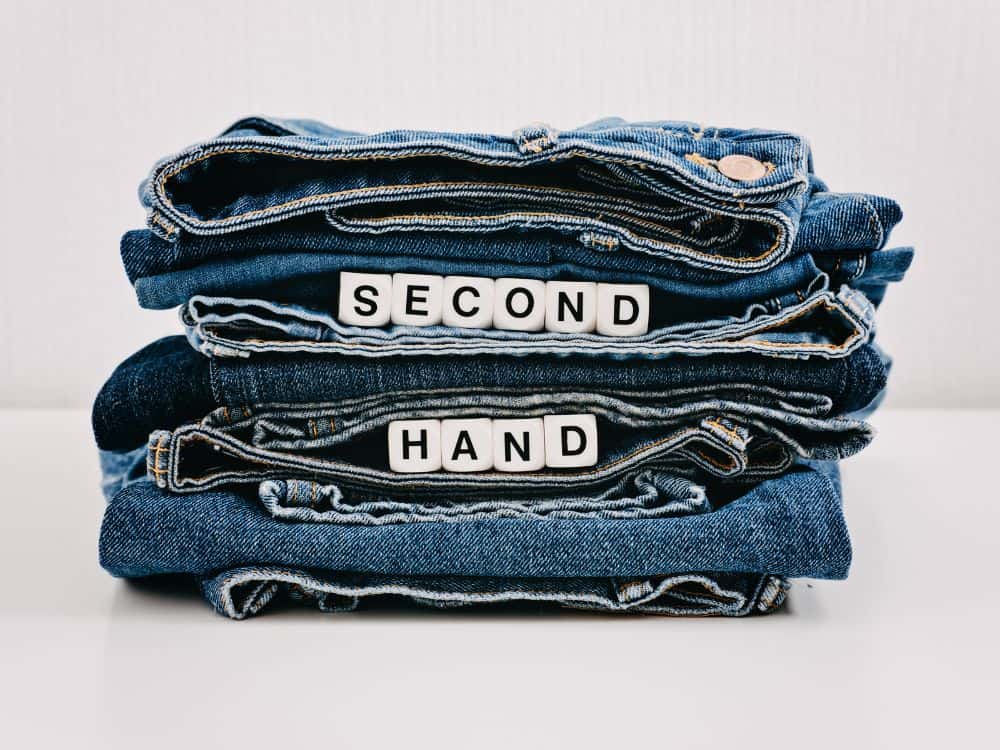
You’re here reading this article on ethical fashion, meaning you care. That’s step #1.
Step #2 is using your buying power to make a difference. Every purchase we make is a vote for what we want made… and the world we wish to live in.
Fast fashion hasn’t fallen out of trend (yet!), only because we keep going back for more.
Don’t feel like you need to single-handedly change the industry overnight. There are simple changes that don’t require much more than a moment of mindfulness before buying.
Here are some things you can do, in order of impact:
- Don’t buy anything at all. Remember, the best answer to the question, “What is sustainable clothing?” is that which you already own.
- Repurpose what you own. If you really want a refresh and are handy with a sewing machine, turn your old clothes (like old jeans, old socks, old underwear and even old shoes) into something totally new.
- Borrow, swap, or rent clothing.
- Purchase used clothing.
- If you must buy new, buy high quality products to last from sustainable clothing brands.
- Take care of your clothes and when you no longer wear them, recycle or donate them.
6. How to Get Involved in Building a More Sustainable Fashion Industry
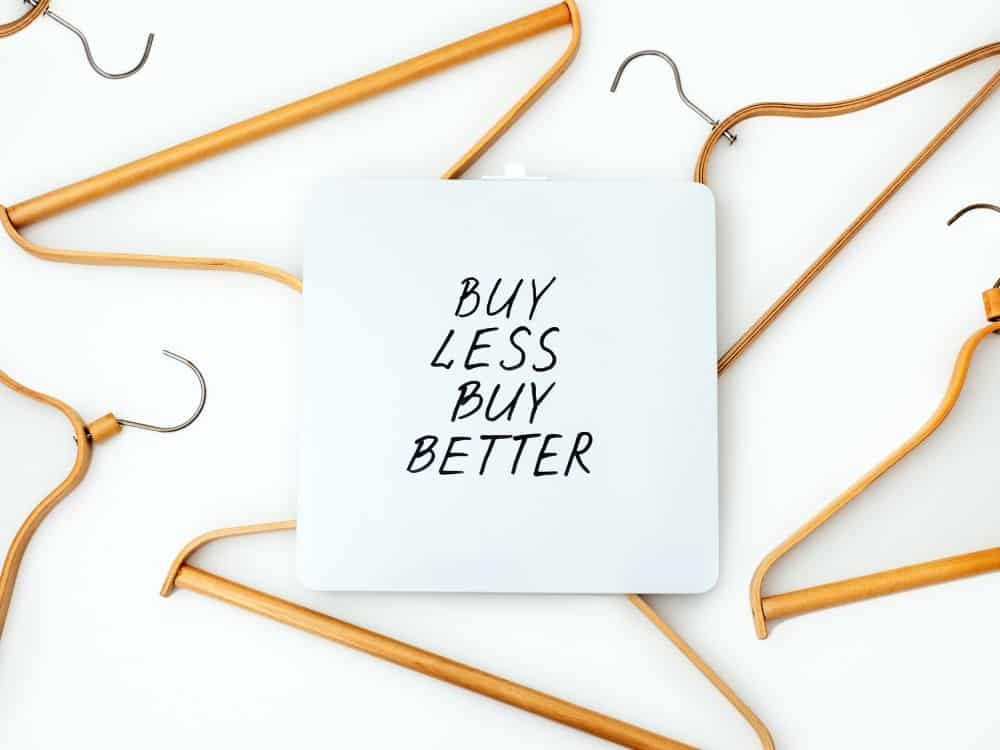
We’ve tackled the question, “What is fashion sustainability?”, but what does it all boil down to from a consumer perspective? How can we ensure we get there?
Simply put: refuse to accept the state of the industry.
Besides creating a more sustainable wardrobe to mitigate the disastrous effects of the fast fashion industry, we also need to pressure the industry to change drastically.
While governments are ultimately responsible to implement policy that ensures greener, fairer, better made clothes at an affordable price, there is positive power in becoming a fashion activist.
Coined by Slow Factory’s founder Celine Semaan, fashion activism “is the idea of using fashion as a medium for social and environmental justice”.
Here are ways you can vie for sustainability in the fashion industry:
- Follow the conversation by staying educated and alert to changes in the sphere.
- Vote with your dollar by only buying ethically to signal to the industry what consumers want. Don’t forget to vote with your actual votes, too, by supporting leaders who care to tackle the climate crisis.
- Purchase slow fashion or, better yet, don’t purchase new at all. Host a clothing swap, shop secondhand, or stick to your own closet wherever possible.
- Pressure bigger brands (and fashion influencers) you love to do better.
- Call out greenwashing when you spot it.
- Sign petitions or take other action with organizations like Labour Behind the Label and the Clean Clothes Campaign.
- Boycott fast fashion brands.
- Support advocacy groups by sharing their messages or donating time or money.
- Proudly make sustainability your “fashion statement”.
- Encourage friends and family to join you in implementing all these actions!
7. Key Resources For The Sustainable Fashion Movement

If all this inspired you to learn more about the biodegradable glitter and glue that holds together the fashion industry, here are some further resources we’ve compiled to help you:
Of course, we realize that our knowledge is limited in comparison to industry insiders, so we encourage you to seek further information from some of the organizations driving the conversion about what sustainability is in fashion:
- Council of Fashion Designers of America (CFDA): An open-access resource hub filled with industry insights, an A-Z sustainability index, and more.
- Common Objective: Offers sustainability resources, training, and support for those working in sustainable fashion business.
- Eco-Age: Provides strategic support and consultations for brands interested in “systemic solutions in line with science, in harmony with nature and in solidarity with human rights”.
- Fair Fashion Center: A think-tank and consultancy for how fashion can be a force for good.
- Fashion Revolution: The OG not-for-profit global movement toward a sustainable and ethical fashion industry. Worth also checking out their digital guide How to Be a Fashion Revolutionary, and their zines Money Fashion Power and Loved Clothes Last.
- Good on You: A free online clothing and ethical shoe brand directory to view sustainability stats.
- Remake: A global fashion advocacy nonprofit with useful resources, including a film archive exposing the realities of the fashion industry across the world.
- Slow Factory: A nonprofit climate innovation hub with a tonne of fashion resources.
- TRAID: A UK-based charity working toward a circular fashion economy by stopping clothes from being thrown away.
Books about what is sustainable fashion:
- Wear No Evil by Greta Eagan
- Let My People Go Surfing by Yvon Chouinard
- Clothing Poverty: The Hidden World of Fast Fashion and Second-hand Clothes by Andrew Brooks
- Fashion and Sustainability: Design for Change by Kate Fletcher
Podcasts that discuss what is sustainable fashion:
Documentaries on what is sustainable fashion:
Did you know we Have a Newsletter?
We cover the latest in sustainable living, fashion, zero waste, beauty, travel, finance and more…
Closing Thoughts About Sustainable Fashion
With so many fatiguing figures, the fashion industry leaves us with a lot to unpack from our closets—especially if filled with fast fashion brands.
It’s so out of control, it takes a lot to see the full picture.
So what is sustainable and ethical fashion?
Necessary.
Hopefully, you now have a baseline understanding of how we approach our ethical and sustainable fashion guides, seeking brands that meet as many ideals as possible—while understanding that finding perfection is kind of like trying to find the logic in women’s clothing sizes.
What matters most is tangible change where it’s possible and continual improvement where it’s not (yet).
Let us know if you have any concerns with the brands on any of our lists. As much time and energy as we put into researching them, fashion is a fickle friend. We all fall victim to greenwashing on occasion.
Aside from recommending brands and keeping us accountable, help us make fashion a force for good by inspiring change through education and empowerment. One simple way to do that is by sharing this article on sustainable fashion.
Let’s all aim to make the most popular fashion trend of the future one that makes a positive impact on the world and its inhabitants.
Styles come and go, but sustainability preserves our planet for a lifetime.
Pin these:
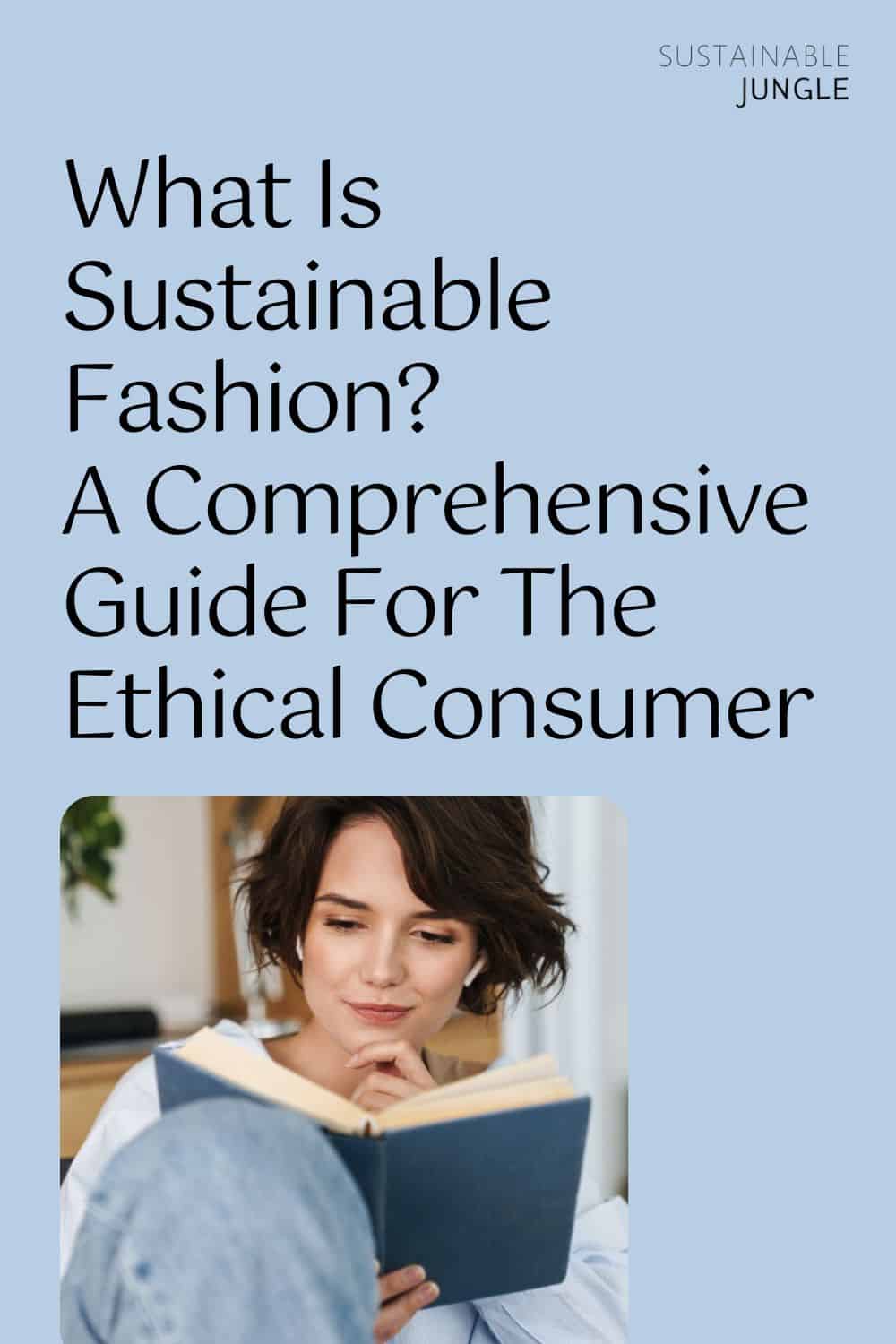
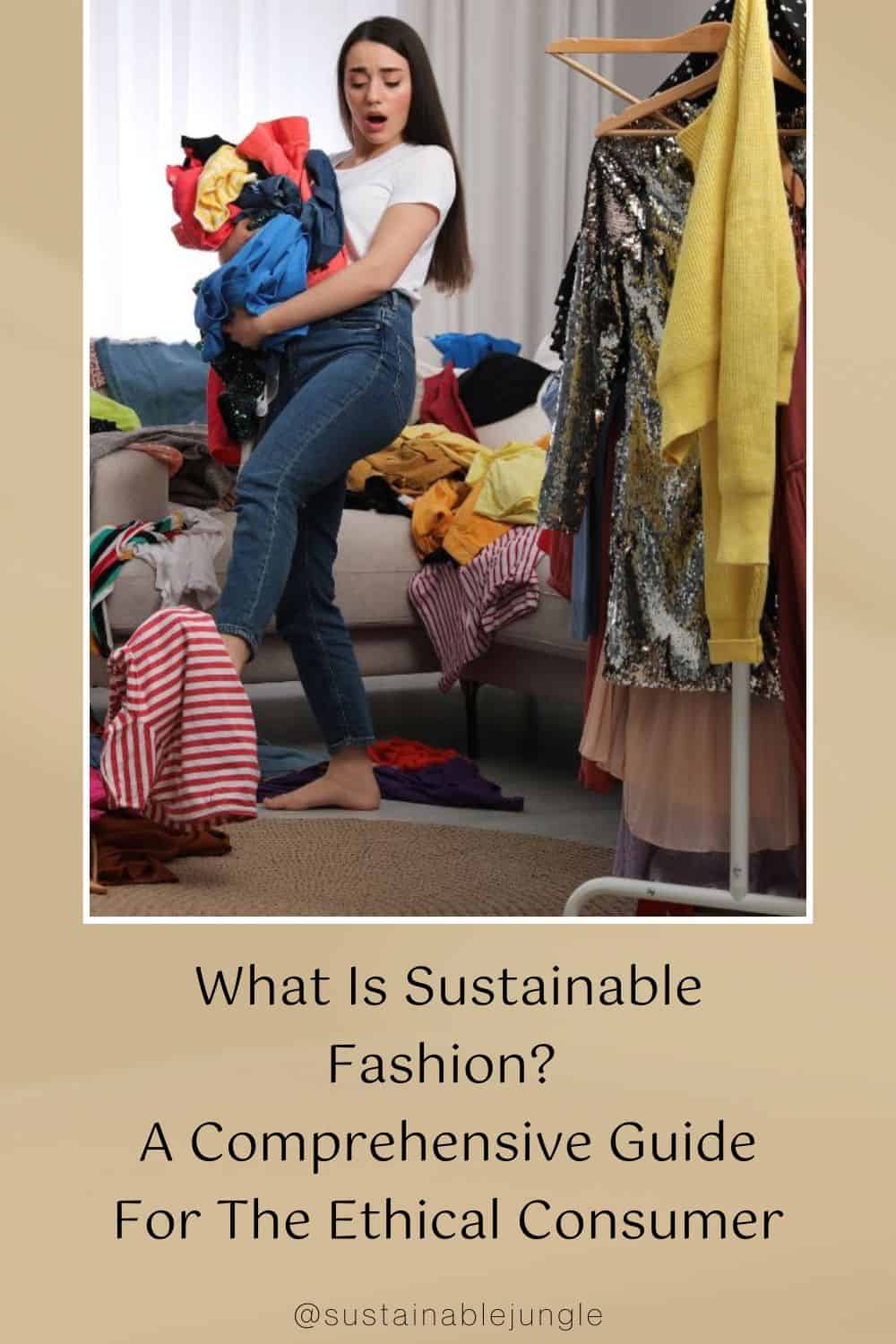


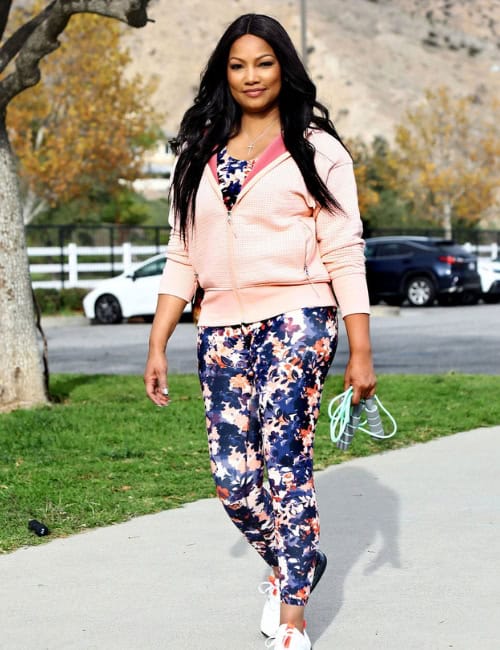
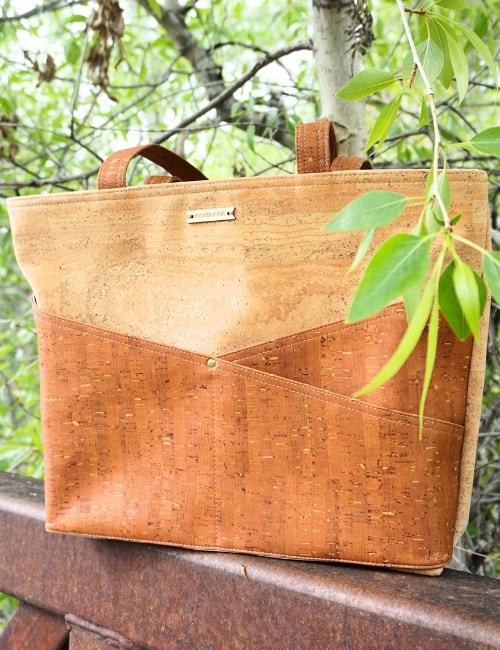
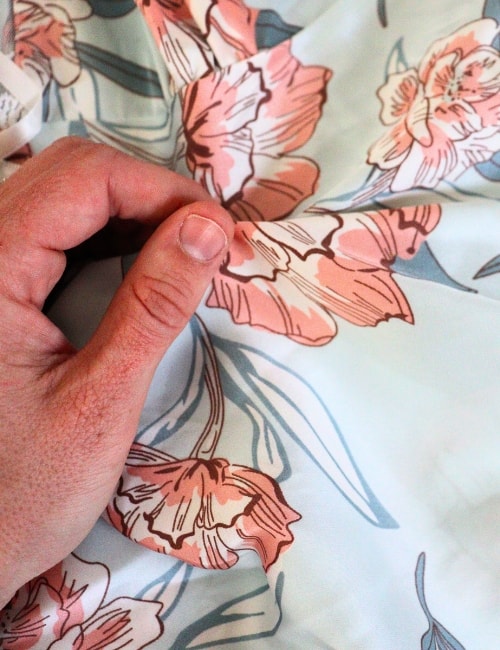
I wanted to thank you for such a comprehensive, clear, and concise explanation of sustainable fashion.
I have never read an article with so much useful information for a consumer to understand what sustainability in fashion means.
I truly love your company, your values, and your mission to educate people who care and truly want to make a difference.
I am a new freelance writer, and it is encouraging to see companies like yours out there. Your mission and vision are exactly what I want to write about and do my part to help change the planet and the people who live here.
Thank you!
~ Heather
That’s so lovely Heather, thank you for taking the time to comment, most grateful for you!
Who is the author of this article and year posted?
Hi Molly, it’s a constant work in progress as we’re constantly updating it! Our team has all contributed to writing it so has no single author.
Great article. We cannot maintain our quality of life as human beings, the diversity of life on Earth, or Earth’s ecosystems unless we embrace sustainability.
Really informative article
Love this article. Opens my eyes up to the issues that I need to be more aware of. I wish I would have learned about this earlier so I could be more cautious about the brands I buy clothes from.